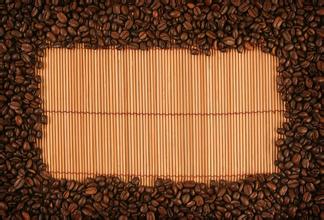How to adjust the standard scale of coffee bean grinding
How to adjust the standard scale of coffee bean grinding
When grinding beans, the size of the powder depends on the way it is cooked. Generally speaking, the shorter the cooking time, the finer the ground powder; the longer the cooking time, the thicker the ground powder. In terms of actual cooking, the ESPRESSO machine takes a very short time to make coffee, so the grinding is the finest, and the coffee powder is as fine as flour; it takes more than a minute to cook coffee by blocking the air, and the coffee powder is medium-sized grinding; American filter coffee takes a long time to make, so the coffee powder is the thickest, like Beijing grains on a shell beach. Grinding coffee powder with appropriate thickness is very important for making a good cup of coffee, because the extraction of water-soluble substances in coffee powder has its ideal time, if the powder is very fine and cooked for a long time, resulting in over-extraction, the coffee may be very bitter and lose its aroma. On the other hand, if the powder is coarse and cooked too fast, resulting in insufficient extraction, the coffee will be tasteless because there is no time to dissolve the water-soluble substance in the powder.
Yega Xuefei is a small town, 700-21000 meters above sea level, synonymous with Ethiopian boutique coffee. It has been a wetland since ancient times. The ancient saying "Yirga" means "settle down" and "Cheffe" means "wetland". The mode of production and flavor of coffee here is so outstanding that Ethiopian coffee farmers compete to be proud of the flavor of their coffee, making it the most famous coffee producing area in Africa.
At first, Yejassefi's coffee trees were planted by European monks, and later by farmers or cooperatives. Yega Xuefei is actually constructed by the surrounding coffee communities or cooperatives, including: Hafusha, Hama, Biloya.

Important Notice :
前街咖啡 FrontStreet Coffee has moved to new addredd:
FrontStreet Coffee Address: 315,Donghua East Road,GuangZhou
Tel:020 38364473
- Prev

Flavor description of Pacamara Coffee Bean introduction of regional varieties produced by grinding scale treatment
Flavor description of Pacamara Coffee beans Grinding scale Taste treatment area varieties introduced savanna climate. The plain area belongs to the tropical rain forest climate and the mountain area belongs to the subtropical forest climate. The average annual temperature is 25-28 ℃, the annual precipitation is more than 1800 mm in mountainous areas and about 1000 mm in coastal areas. The rainy season from May to October is of positive significance to the aroma of coffee. In 2005, Salva
- Next

How long can the coffee beans be kept after they are taken apart? how to peel off the coffee beans after the coffee results?
How long can the coffee beans be kept after they are taken apart-how to peel the coffee beans in the washing process after the coffee results? the peel and pulp of the fruit are peeled off with the coffee beans by a special de-pulping machine. The coffee beans then enter the fermentation tank for fermentation treatment so that the mucous membrane is no longer sticky. The sugars in the mucous membrane are decomposed during fermentation. Depending on the fermentation method, the fermentation time is usually 12 hours.
Related
- Guji coffee producing area of Guji, Ethiopia: Humbela, Shakiso, Wulaga
- What is the most expensive variety of Qiloso in BOP multi-variety group?
- How to store the coffee beans bought home?
- Why are Yemeni coffee beans so rare now?
- Ethiopian Sidamo all Red Fruit Sun Sun Santa Vini Coffee beans
- SOE is mostly sour? What does it mean? Is it a single bean? what's the difference between it and Italian blending?
- Is Italian coffee beans suitable for making hand-brewed coffee?
- How to choose coffee beans when making cold coffee? What kind of coffee beans are suitable for making cold coffee?
- Just entered the pit to make coffee, what kind of coffee beans should be chosen?
- Can only Japan buy real Blue Mountain Coffee? What are authentic Jamaican Blue Mountain coffee beans?

